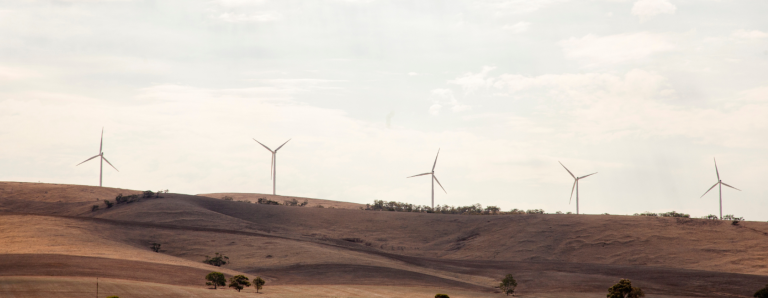The impacts of warming temperatures and unreliable, expensive power systems are deeply felt by First Nations communities across Australia. Coupled with existing health and infrastructure challenges, these issues have resulted in many Indigenous Australians living in substandard conditions, struggling to power their homes, businesses, and services effectively and efficiently.
The situation is dire – remote Indigenous communities are at serious risk. The persistent social and economic disadvantage evident in many remote Indigenous communities can exacerbate their vulnerabilities to the impacts of the changing climate.
There are remote communities across the country which do not have access to power through an electricity grid. In many of these instances, the communities solely rely on diesel-generated power. The challenges that we face through climate change events, including heavy rainfalls and flooding, can result in access to essential services for these remote communities being completely cut off. Those who are serviced by unsealed roads will suffer the most. Without diesel to power their communities, they simply do not have electricity in times of extreme weather events.
This escalating crisis demands a thoughtful approach that places Indigenous leadership at its core. It is only right that Australia’s first peoples – so profoundly impacted by the crisis – are an integral part of its solution. Simply put, the future of clean energy in Australia must align with the values and needs of Aboriginal and Torres Strait Islander peoples.
Their voices and aspirations should shape the transition in a unique way, not just because of their recognised rights and interests across much of Australia, but because they offer invaluable contributions to the design and development of Australia’s global commitments, including the Paris Agreement.
And now, First Nations communities are stepping up to play a vital role in the clean energy transition conversation.
Currently, more than a quarter of Australia’s energy generation comes from renewables, marking a significant shift in the country’s energy system. Indigenous voices are essential for leading and influencing clean energy and environmental initiatives, whether through smaller, community-based projects or larger manufacturing endeavours.
An excellent example of the positive impacts of climate change awareness, and the role played by Indigenous Australians, are the opportunities Indigenous land managers have to develop projects on their Country, contributing to the reduction of greenhouse gas emissions and promoting carbon farming whilst meeting their cultural obligations. And through methods such as planting trees and restoring degraded rangeland Country, First Nations peoples have made substantial contributions to clean energy and the fight against climate change.
The Indigenous Land and Sea Corporation (ILSC) supports these clean energy initiatives as part of its role in partnering with First Nations peoples. For nearly three decades, the ILSC has worked with Indigenous communities to prioritise their environmental and cultural benefits as rightful stewards of land, water, and sea.
The ILSC’s commitment to these efforts is renewed and reinforced in its National Indigenous Land and Sea Strategy (NILSS).
On May 8-9, the 2024 First Nations Clean Energy Symposium will take place in Adelaide, bringing together First Nations leaders, community members, and experts on Kaurna Country. This Symposium, a partnership between the First Nations Clean Energy Network, the National Native Title Council and the ILSC, will shine a light on how Indigenous voices can shape strategies for a cleaner, more sustainable future.
The Symposium will explore how First Nations peoples, together, can achieve a better, more secure life for communities across Australia through the prospects of clean and efficient energy. We aspire to achieve a future where remote Indigenous communities can power their homes through a reliable, affordable and efficient energy grid – even during times of extreme whether events. To reach this goal, we must ensure traditional knowledge and land management practices inform clean energy methodologies.
The connection between First Nations peoples and their Country is profound, backed by more than 60,000 years of uninterrupted and sophisticated use and management of Country. Drawing on this experience will shape the future of Australia’s energy market for the better.
We know there isn’t a one size fits all approach to working with Indigenous communities to address climate and energy related issues and the strategies to combat the issues – but we know that ‘knowledge sharing’ and amplifying Indigenous voices and leadership is a critical part of the journey to achieving a sustainable, clean future.
If the right voices are heard at the right time and in the right places, Australia’s clean energy future will be brighter for everyone.
Joe Morrison
ILSC Group Chief Executive Officer


